One of the places we visited in our trip to Cornwall was The Museum of Witchcraft and Magic. Sounds fascinating, doesn’t it? I saw their museumofwitchcraftandmagic.co.uk and I was intrigued. What kind of things can be on display at the museum of magic? I’m glad we did visit it. It was very interesting, I even got a booklet with some more information about the persecution of witches from the gift shop.
Although it wasn’t my intention when I was Photoshopping, the post has 13 photos. I noticed that when I was uploading them.
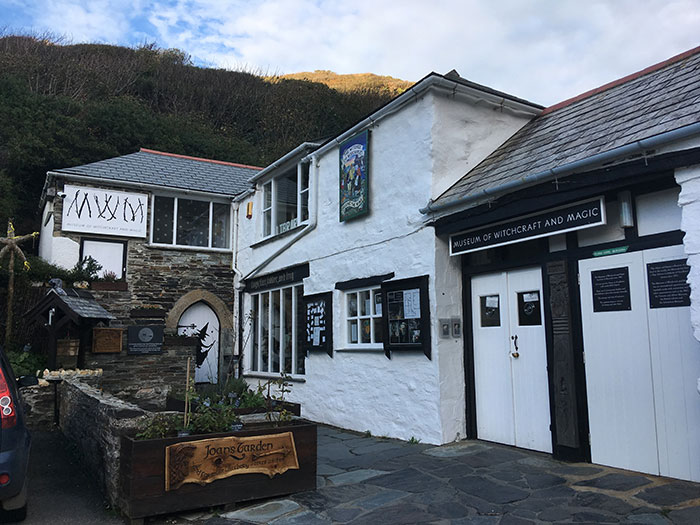
So, this is how The Museum of Witchcraft and Magic looks like. It is in Boscastle, as I mentioned. Besides the museum are some lovely gift shops, there is the harbour, managed by National Trust, a lovely tea rooms where we went for cream tea. Also, from Boscastle one can go on coastal path, to see amazing views. All these three will feature in another post.
It is quite small, but it boasts plenty of artifacts, so expect to spend up to a couple of hours looking at everything. The Museum of Witchcraft and Magic was created by Cecil Williamson, a man interested in witchcraft from childhood. He opened a museum of witchcraft in Stratford-upon-Avon, but that triggered some local opposition. He moved to Isle of Man and in 1951 opened a Folklore Centre of Superstition and Witchcraft. Cecil returned to mainland and set up a few more witchcraft museums. The one in Boscastle opened in 1960.
Cecil Williamson, born in 1909, was a film maker and a spy during the WW2. He died in 1999.

I don’t think there is something more relevant to the image of a witch than the cauldron. Of course, the broom, but that has its special place at the museum, see more towards the end of the post.

Persecution of witches is something I found fascinating while visiting the museum. In Europe 50,000 people were killed after being accused of witchcraft. From those 1,000 died in UK. At the museum there is a list of them, starting from 1652.
The mannequin has the “scold’s bridle”, not only used for witches, but on nagging women during the Republic (1650s, before the restoration on 1660). It was also used on slaves. It had a piece of metal going into the mouth so the person it was used on couldn’t speak. Unsurprisingly, a woman that was tortured with this, Agnes Sampson in 1591, confessed to being a witch and was strangled and burned.
Other items on the mannequin are the wrist shackles, a waist band, and thumbscrews (does “what is says on the tin”). The latter used mostly in Scotland. Pretty gruesome stuff on display, but it’s a part of our collective history. From 1450 to 1750, thousands of people were accused of witchcraft and killed in, present day Germany, Poland, France, Switzerland. Of course there are cases all over Europe.
Witchcraft being trialed as heretics started, as far as is known, in Ireland, in 1324. A priest accused a wealthy woman of sleeping with the devil to gain power. The priest did have some active imagination.
In England, the late 17th century, along with the Enlightenment, people started to believe less in magic. The last person to be convicted was Jane Wenham, in 1712. She was later pardoned. That is really interesting, considering laws regarding magic passed in law by Henry VIII, Elizabeth I, and James I.
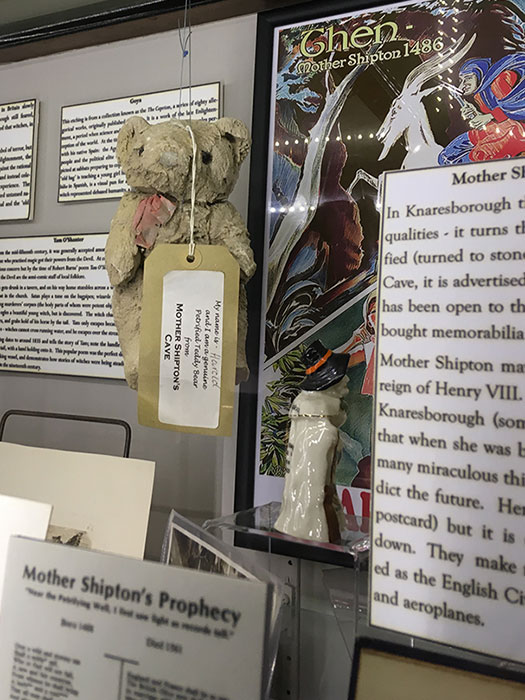
I was delighted to see at The Museum of Witchcraft and Magic this teddy bear from Mother Shipton in Knaresborough. I’ve visited it 5 or 6 years ago and now I realize I didn’t blog about it. I should visit it again, it is a lovely place with a fascinating story. It’s the oldest tourist attraction in England, being open to the public from 1630, a few years before the Tower of London. She was born in the late 15th century.
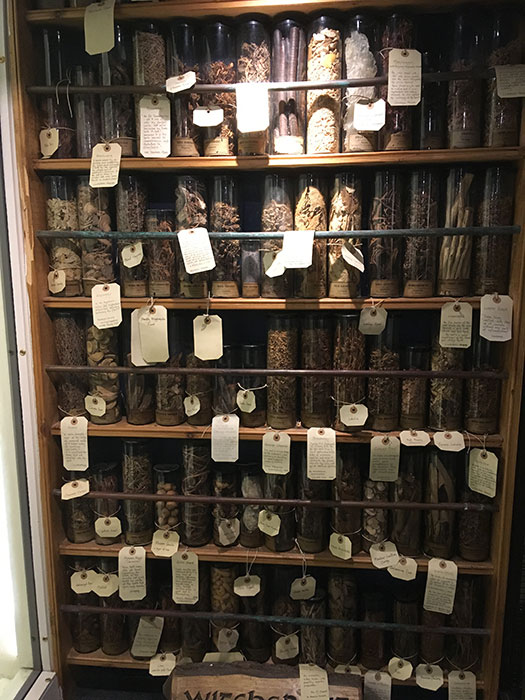
The wall of herbs proved to be very interesting. It made me think of the placebo effect and how people would actually improve their health for example because they thought the herbs will help them.
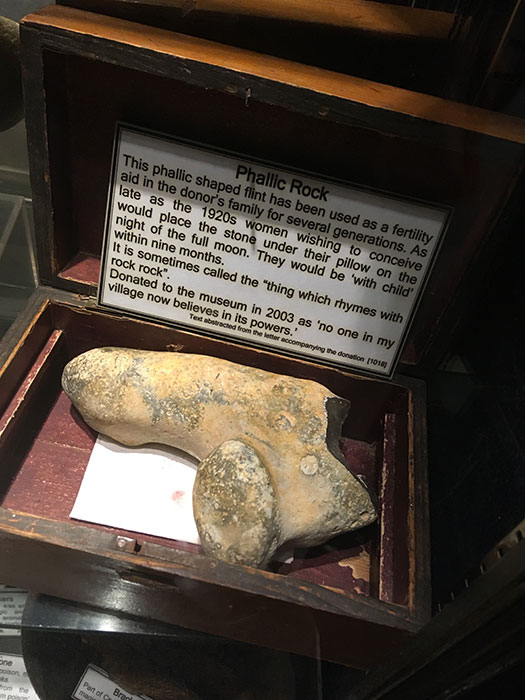
This is not the only phallic artifact on display. If a woman wanted a child, she would put this under the pillow on a full moon.
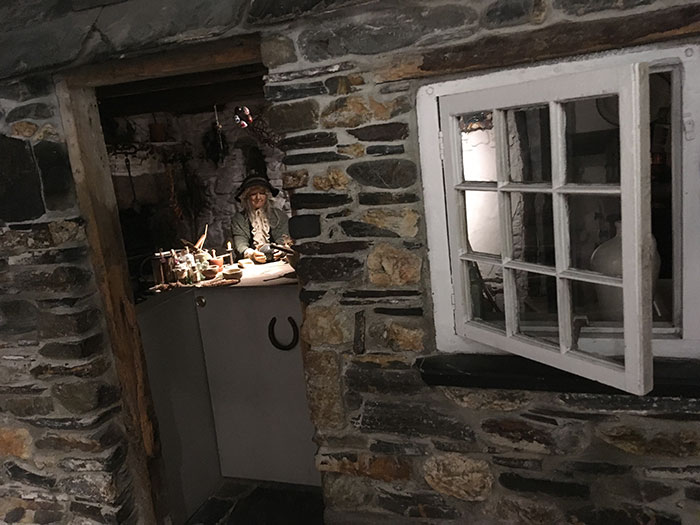
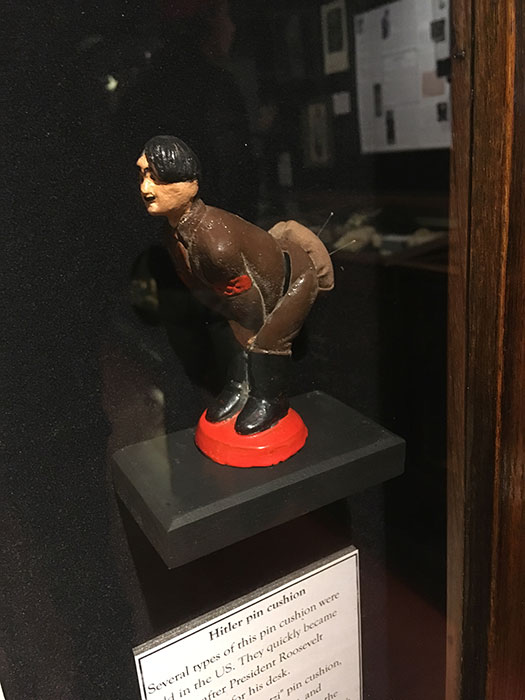
A bit of VOODOO that can boost up morale during the WW2. It does make for a funny artifact. Not the only one of its kind in the museum, there are two other politically inspired VOODOO dolls.
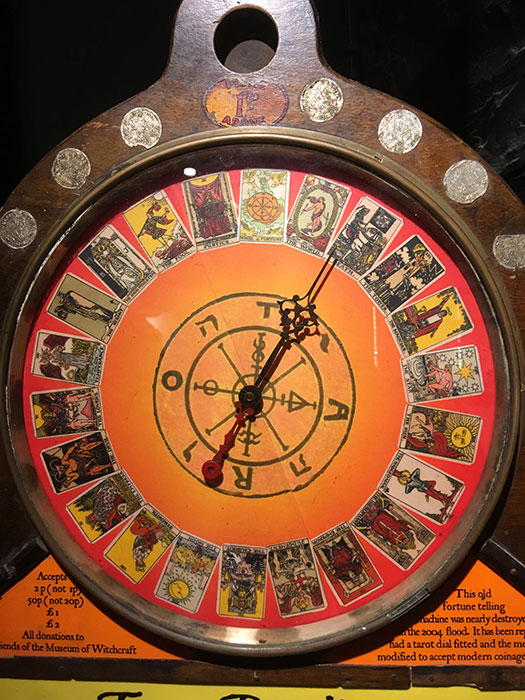
The wheel of fortune. Luckily it was modified to work with our modern currency. I checked for coins and I had only one that would work. So, as we didn’t have two to have a go each, we’ve rapidly made our own “magical method”: by holding hands when using it will “apply” to both. It’s quite scary how easy a scientifically minded pair of humans can make up magic.
Anyway, the wheel is fun and the money goes back into the keeping of the museum.

Death! We both started laughing. Even death can have a good interpretation. Obviously, it is unclear enough to make it suitable for most people. Rebirth, renewal, and transformation… this can apply from deciding to lose a bit of weight, eat more veggies, getting a new sofa, to change the job, move house/city/country, or have a baby.

Outside there is a well that is used for fundraising money for Cornwall Air Ambulance. On the right you can see the broomstick park.
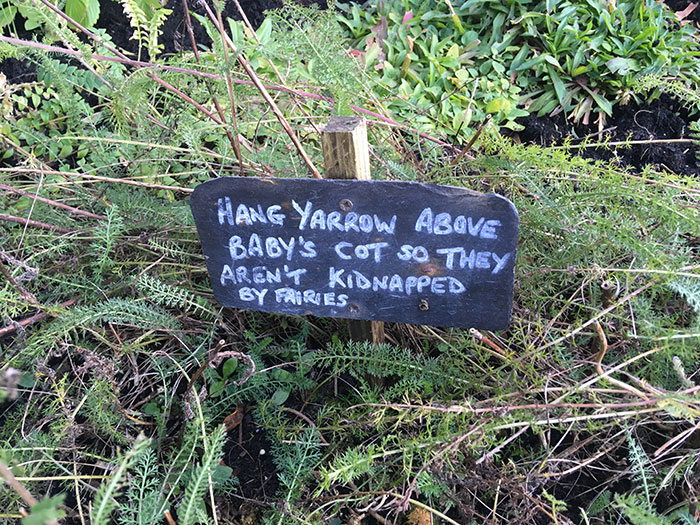
New parents scared by malevolent fairies can get some ideas from the museum too. Like growing their own yarrow.
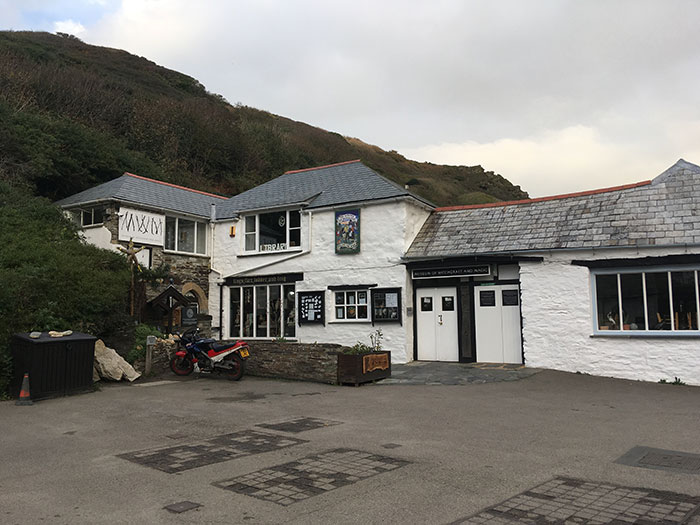
There are so many other interesting artifacts to see. I’ve picked only a few that I found interesting. We’ve spent over an hour in the museum, I think it was closer to two. So, for me, this museum is a must if you are planning to visit Cornwall and want to see something different.
Have you ever been to The Museum of Witchcraft and Magic or did you hear about it? Is it something you’d like to see?
The Museum of Witchcraft and Magic can be found in The Harbour, Boscastle, Cornwall, PL35 0HD. There is a pay & display car park nearby. The entry fee is £5 for adults and the museum is open daily. Check their website for more details before going.

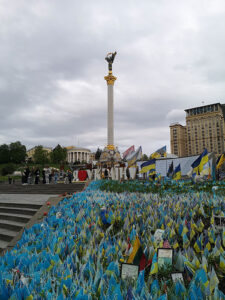






This sounds like a fascinating place – I’ll definitely visit when I’m down that way!
I havent been for a few years either but I recognised the little petrified teddy from Mother Shiptons Cave, what a cutie!
This is such a fascinating museum! Thanks for sharing it with us.
I hadn’t realised that so many people accused of witchcraft died in the UK. Even the number for the whole of Europe was pretty staggering and far more than I expected!
I’m not surprised you laughed when you got death, it’s a bit of a weird one to have come up. Hopefully it means good things to come your way though.
Thanks again for sharing ♥
What a fantastic place to visit! The fee is so cheap. Great place to explore when we go there!
It sounds utterly fascinating!! The artefacts must be so informative being able to think how something ordinary can be attributed powers.
I think this would be an interesting place to visit… particularly for the section on the persecution of witches.
Although I do believe in placebo effect, I also think many herbs truly have healing powers and it’s funny how some doctors today are starting to get back to that. Whatever works!
I prefer to think of fairies as good (if perhaps a bit reckless) rather than malevolent. 🙂